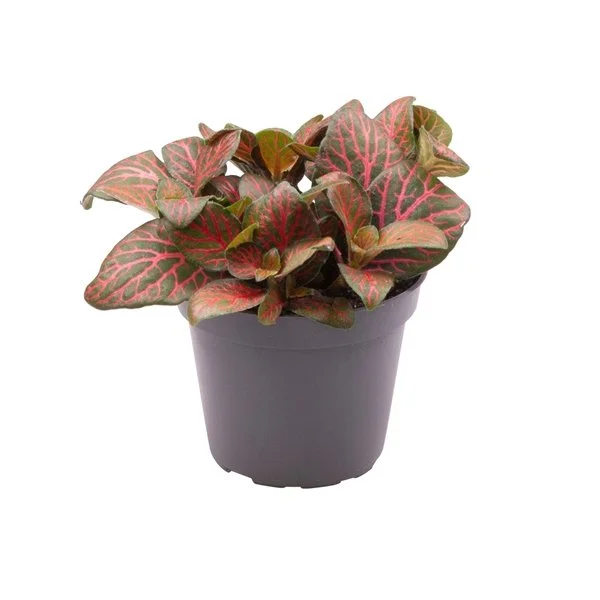Fittonia verschaffeltii red 10cm
Fittonia verschaffeltii red 10cm
Fittonia Care Guide
Fittonia, commonly known as the nerve plant, is a popular houseplant admired for its vibrant foliage and lush appearance. Proper care is essential to maintain its health and vibrancy. Here are key aspects of Fittonia care:
Light Requirements
Fittonias thrive in bright, indirect light. Direct sunlight can scorch their leaves, while too little light may cause them to become leggy and lose their vivid colours. A spot near a window with filtered light is ideal.
Watering
Keep the soil consistently moist, but not soggy. Water the plant when the top inch of the soil feels dry to the touch. Overwatering can lead to root rot, so ensure good drainage. During the growing season (spring and summer), they may require more frequent watering.
Humidity
Fittonias prefer high humidity levels, ideally between 60% and 80%. If you live in a drier climate, consider using a humidifier, pebble tray, or misting the leaves regularly to replicate their natural tropical environment.
Temperature
Optimal temperature for Fittonia is between 18°C to 24°C. They should be protected from temperature extremes and drafts. Avoid placing them near heating vents or air conditioners.
Soil
Use a well-draining potting mix, ideally one that retains some moisture. A mix designed for moisture-retentive plants, such as a blend of peat, perlite, and orchid bark, works well.
Fertilising
Feed Fittonia with a balanced, water-soluble fertiliser every four to six weeks during the growing season. Reduce fertilisation in the autumn and winter months when growth slows down.
Pruning
Regularly trim any dead or yellowing leaves to encourage healthy growth and maintain the plant's aesthetic appeal. Pinching back the stems can also promote a bushier appearance.
Repotting
Repot Fittonia every one to two years to refresh the soil and promote growth. Choose a pot that is slightly larger than the current one and ensure it has drainage holes.
Pests and Problems
Watch for common pests such as spider mites, mealybugs, and aphids. If detected, treat with insecticidal soap or neem oil. Additionally, keep an eye out for signs of overwatering, including yellowing leaves or wilting.
By following these guidelines, you can ensure your Fittonia thrives and remains a beautiful addition to your plant collection.
Pet Friendly

